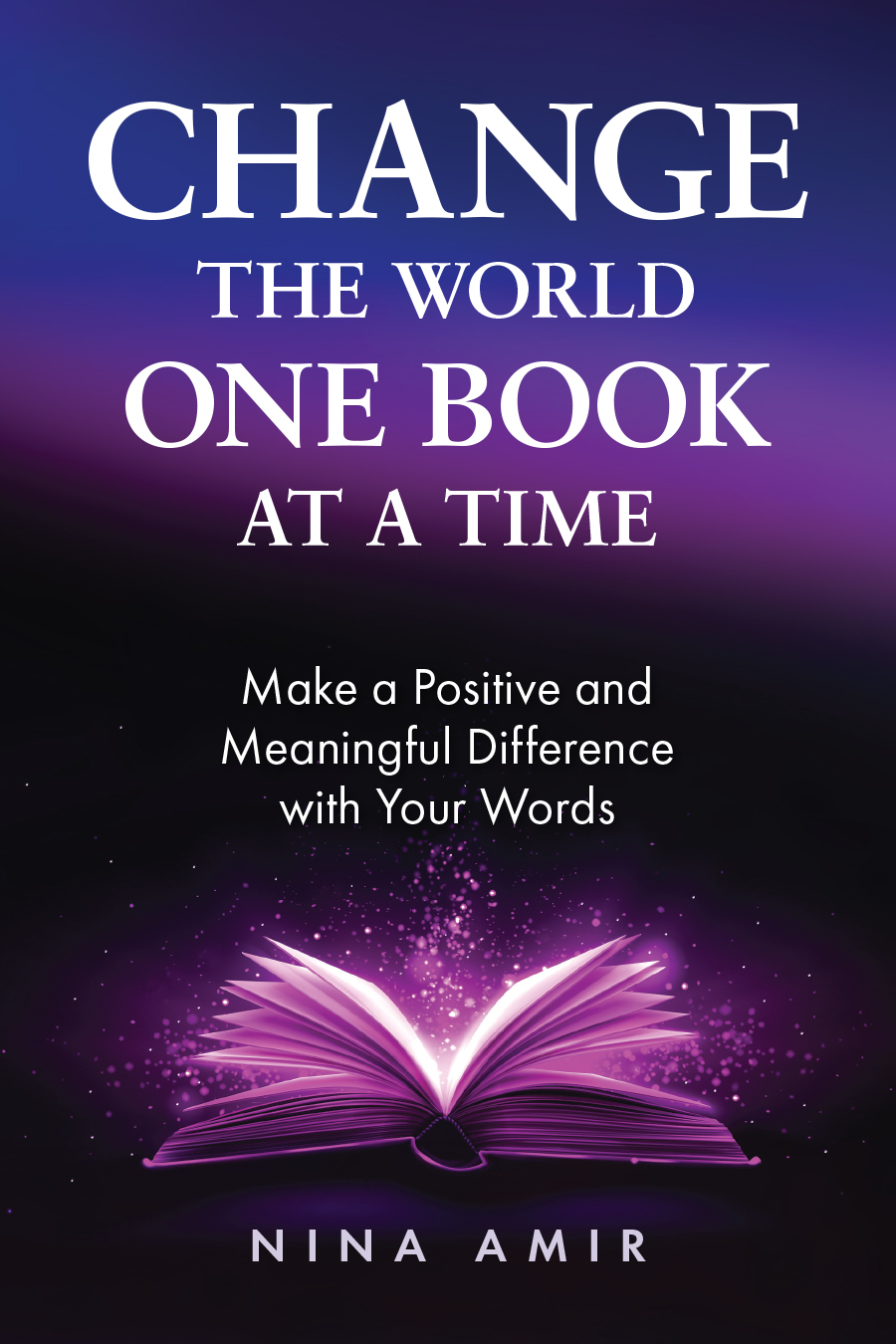Last week after I finished preparing for and giving a talk on moving through fear, I realized that once again I had done so just during the time when the Jews all around the world were preparing to read the portion in the Old Testament, or Torah, called Beshalach. Last year I gave this same talk in Tuscon, AZ, during the Cactus Kallah, and this was the portion we read that weekend. In this section of Exodus (13:17-17:16) the Israelites are pursued by the Egyptians and trapped at the Red Sea, until the sea parts and they travel to safety on the other side. I love this story, and I often use it for teaching about moving through fear and about having courage and faith to move forward in life – whether that means towards safety or towards a goal or towards the fulfillment of your dreams or towards living life more fully.
I enjoy telling two stories about this Torah portion that specifically relate to moving through fear and having faith and courage. The first has to do with a midrash, or a story that fills in a gap in story. It says that the sea didn’t actually part when Moses raised his staff. It only parted when a man named Nachshon walked into the water. He took inspired action. He made an affirmation of action. The second story has to do with an interpretation of the actual Torah portion that I heard given by the late Rabbi Alan Lew (may his memory be a blessing…for me this one lesson, indeed, is that).
If you read the text in Exodus, you’ll see that just prior to the parting of the Red Sea the Israelites stood on the shore with the Egyptian army approaching and nowhere to go but into the sea. Afraid, they began to cry out to God and to Moses. Moses, however, simply tells them to have both courage and faith.
Going a bit deeper into the story, Rabbi Lew discusses the advice Moses gives the Israelites as they are overcome with fear and lack of faith (and for this I’ll always be grateful to him…). As I remember it, he tells them not to be afraid, to stop, and to see, to listen/remain silent, and then to take action. (I have since lost my notes from Rabbi Lew’s lecture; if I have this wrong in any way and someone wants to correct me, I’ll be even more grateful!)
Why this five-part advice? When we are afraid, we don’t see or hear things clearly. In fact, the Israelites, Rabbi Lew pointed out, no longer saw a small group of Egyptians approaching – just 600 in all – but rathear they saw all of Egypt and were terrified despite the fact that the Israelites outnumbered the Egyptians by thousands. In fact, the Israelites may have numbered over two million! According to some accounts, more than 6 million men aged 20 or older stood along that shore; we have no numbers for the women and children who were with them. Yet, fear clouded their vision. That’s why when we are afraid we must stop. We must look around us with clear vision, listen carefully and figure out if what we are seeing and hearing is real or clouded by our emotions. What we see and hear might be a figment of our fear – a whole nation approaching rather than a small army. Moses even says to his people, “You won’t ever see this in quite the same way again” Or “The way you have seen the Egyptians is only today, but you shall no longer continue to see them for eternity.” (Yes, they will be free of them on the other side of the ocean and may never see them again, but they also will never see them exactly as they did in that moment of fear.) That is why when we are afraid we must go inward – “hold our peace,” as Moses said – find a balanced place and evaluate the reality of our perceptions and the situation.
At this point in the story, of all things, God say to Moses, “Why do you cry out to me? Speak to the Children of Israel and let them travel.” Other translations say, “Speak unto the Children of Israel that they go forward.”
In other words, God says, “Stop looking to me for the answers. Get moving! Take action!”
This may seem an odd response to the Israelite’s pleas for help, especially when they appear stuck between a huge sea and an army, but it’s actually a great piece of advice. For those of use who feel fear at any time, we need to do as Moses recommended – stop, look, listen (Just what we teach our kids to do before crossing the street!) …go inward…get balanced and centered…evaluate the reality of the situation, and then, as God suggested, take action based on our own wisdom.
Let’s go back to the story of Nachshon. He understood God’s response. He possessed both faith and courage. He trusted that if he took action that God would provided the needed miracle. He heard the words, “Let them travel. Move forward.” He also knew that God’s response – “Why are you crying to me?” – wasn’t some cold rebuke but rather encouragement. It meant, “Figure it out yourself. You have the answer. You know what to do. You have the tools.” Nachshon knew what those tools were – the power of his thoughts and his vision and his faith. And he used them along with his affirmation of action. He began to walk and didn’t stop until the water parted.
Remember, however, God also told Moses to raise his staff and stretch out his hand over the sea, and the sea would split. The midrash says that the sea did not part initially. (Maybe Moses lacked faith at that moment…) At this point in the story, I imagine Nachshon standing quietly, assessing the situation, contemplating Moses’ and God’s words. And then, beginning to walk. He walked right into that sea until the water was up to his ankles, up to his knees, up to his waist, up to his shoulders, up to his chin, up to his nose. And just when he thought he would drown, low and behold, the waters parted. Only then were the Children of Israel able to travel to safety. (And supposedly for this action of one man Israel later merited receiving the land of Israel.)
As you stand on the edge of whatever Red Sea is before you – whatever obstacle in your life that seems insurmountable, ask yourself: Do you have Nachshon’s faith and courage? Can you stop, look, listen, go inward, and find the wisdom to move forward with inspired action? Do you have the tools? Do you know what to do? Can you impact your future?
As you stand with your back against that same Red Sea seeing the enemy approach – be it your mounting bills, your failing marriage, your job insecurity, your fear of success or failure, or any other fearful situation – can you stop, look, listen, and go inward, and then move forward? Can you find the wisdom to know how to move forward through your fear and create a miracle?
You do have the tools.
You do know what to do.
You can create a miracle.
You can change your future.



In Exodus 14 it says Pharoah took 600 of his select chariots and all the other chariots of Egypt with officers over them. It also says the Egyptians chased after them with all the horses and chariots of Pharoah, his horseman and his army. This more than just 600 chariots, but Egypt’s entire military. They had good reason to be afraid!
I went back and reread the text, and you are correct. I was basing my this on what I remember Rabbi Alan Lew teaching. I’ll have to find his book, “Be Still and Get Going,” and see if he mentions it in there.
I suppose the question remains whether the number of Egyptians was more than the number of Israelites…
Thanks for your comment and for pointing this out.
Hello Nina, Thanks for this awesome insight. My blog speaks to courage all the time and walking through seas and finding the courage of Nachshon. Could I share your article on my blog: http://www.red-sea-courage.com ? Thanks for the awesome word on seizing opportunity and finding God in that place.
I will hold unto this comment:” In other words, God says, “Stop looking to me for the answers. Get moving! Take action!”
Jennifer,
I’d be honored for you to share my blog post. Please just link back to the original post. Use my name and the name of the post with a hyperlink in the name of the post to the original. I see that you have your whole book posted on your blog. Did you write it off line or blog it? I have another site where I talk about blogging a book, and one more were I talk about writing and publishing in general. These might interest you. There is info on writing and publishing on my other website as well. Good luck, and keep walking into the water like Nachshon! Thanks for reading and for commenting. If I can be of service, please let me know.
I enjoyed your thoughts about moving in faith into what ever it is that God has called you to be or do. The story of Moses and the Red Sea were not new to me, but the story of Nachshon was. This idea of a “midrash” is also new to me. Is it possible that you could expand on what is a “midrash” and then how do we know this story of Nachshon is the real deal? From where did this story come?
Dennis,
Thanks for your comment. I’ll think about writing a post on the topics you proposed. Others would probably be interested.
Nina
Hi, today I hear the story of Nachshon for the first time. it was used as a demonstration of faith. This is as you say ‘midrash’ was written two years ago… Has there been a blog created for this? Would make interesting reading
Here you go:
http://purespiritcreations.com/var/www/html/public/do-you-have-the-courage-and-faith-to-part-your-red-sea/
No, Nina, I don’t have my entire book on the blog. The book is actually much different. I blog about certain topics. I ended up back here after googling myself and I forgot i posted on this blog a while back. Thanks and i will do the link back!~ Jennifer